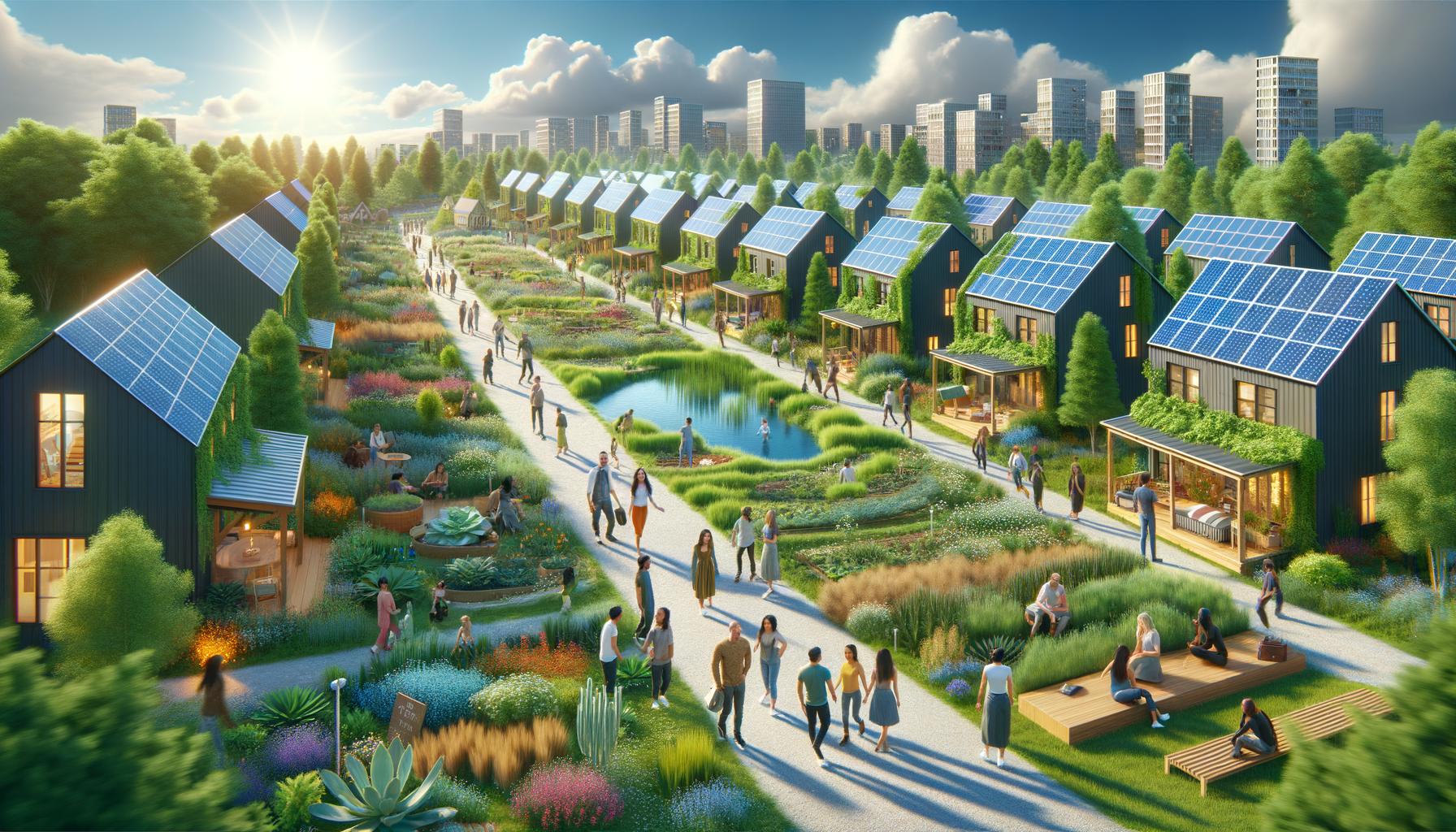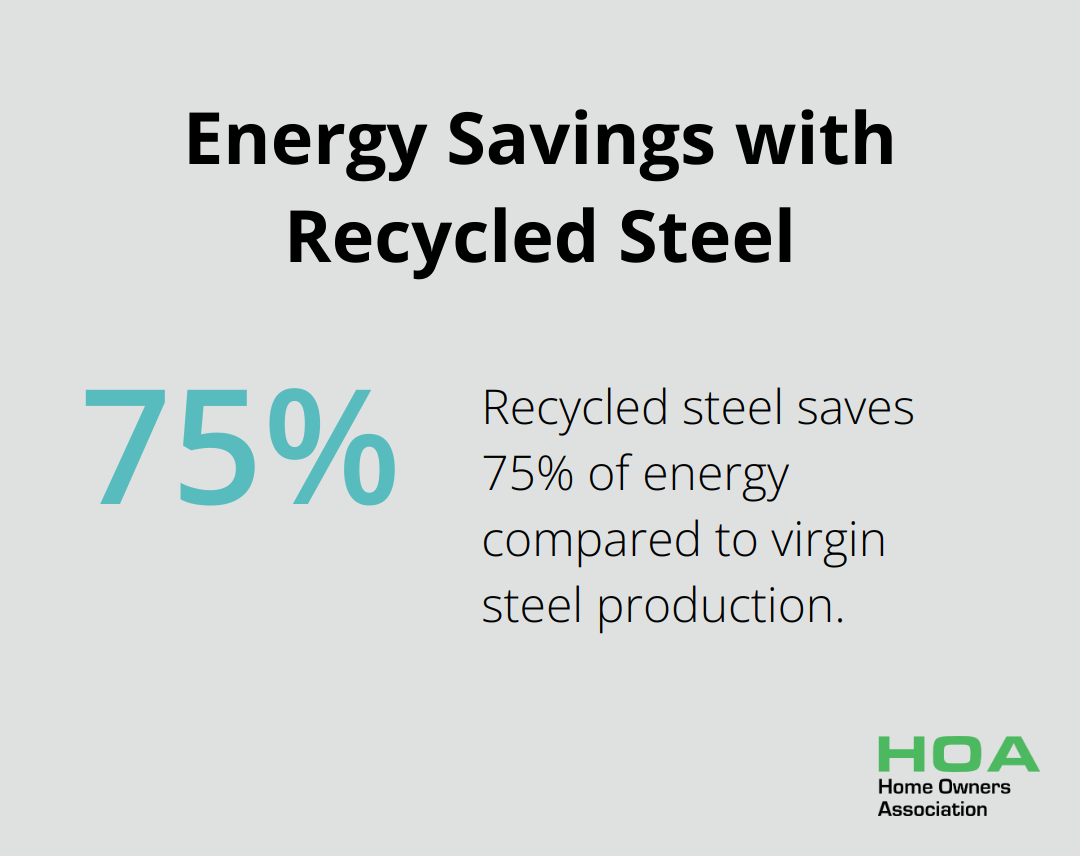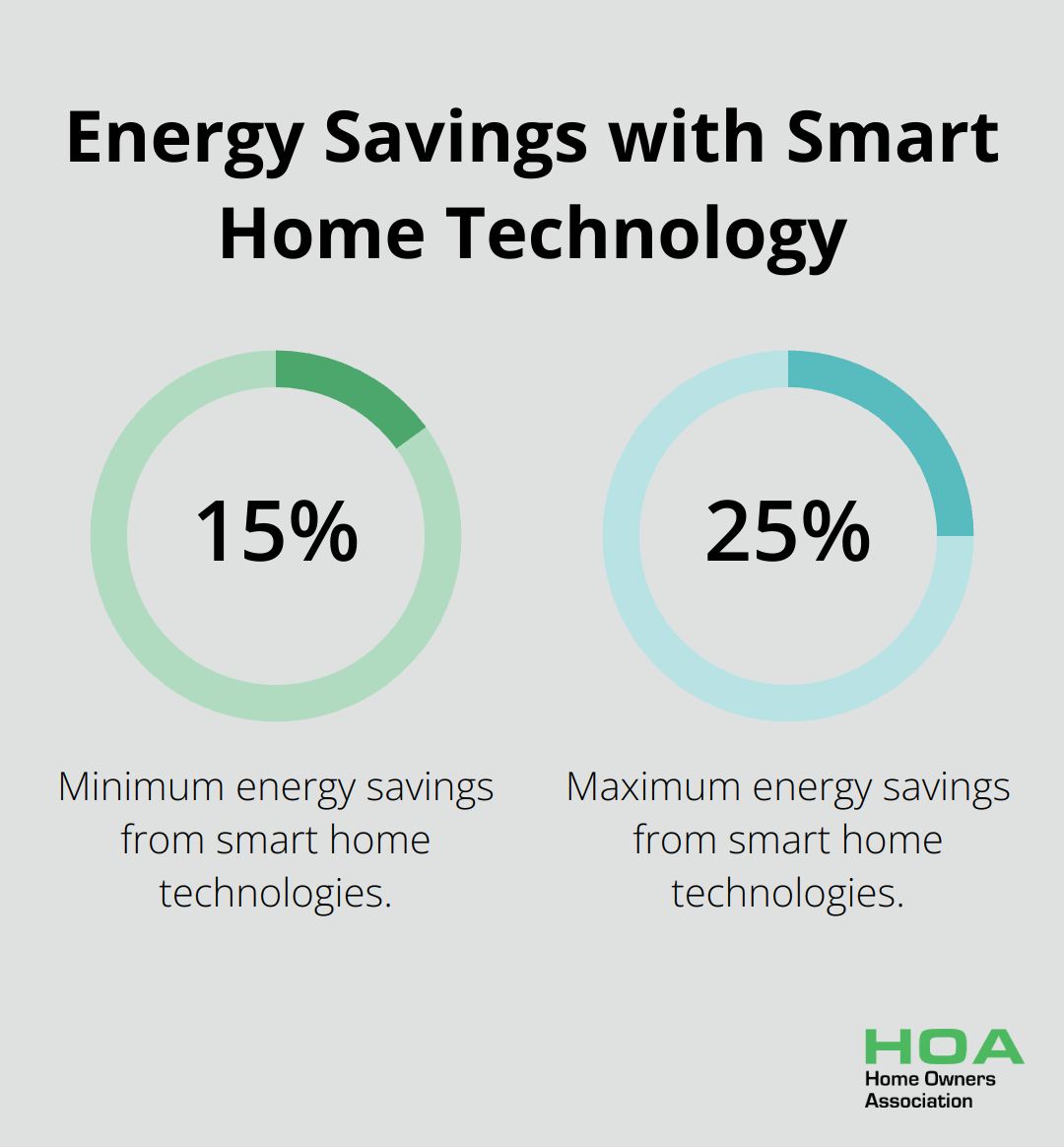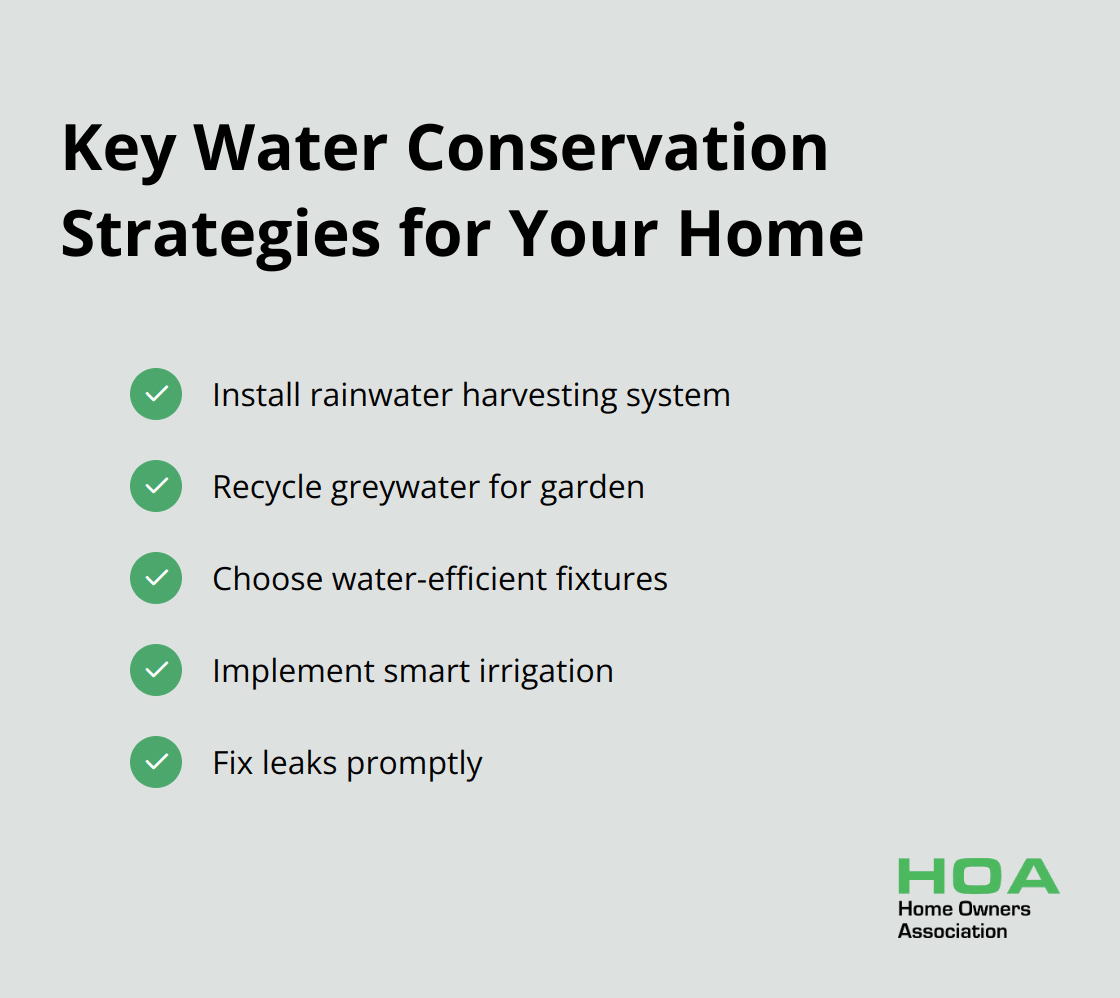
At Home Owners Association, we’re committed to promoting sustainable living homes that benefit both residents and the environment.
Creating eco-friendly dwellings isn’t just a trend; it’s a necessity for our planet’s future. This guide will explore practical strategies for building and maintaining homes that minimise environmental impact while maximising comfort and efficiency.
From innovative building materials to energy-saving designs and water conservation techniques, we’ll provide you with actionable steps to make your home more sustainable.
Eco-Friendly Building Materials for Sustainable Homes
At Home Owners Association, we’ve observed a significant shift towards sustainable construction practices in recent years. Eco-friendly building materials stand at the forefront of this movement, offering durability, energy efficiency, and reduced environmental impact.
Recycled and Reclaimed Materials
One of the most effective ways to reduce the environmental footprint of your home involves the use of recycled and reclaimed materials. These can include recycled steel, which requires 75% less energy to produce than virgin steel (according to the Steel Recycling Institute). Reclaimed wood from old buildings not only adds character, but also prevents deforestation.

Sustainable Wood and Bamboo
When new wood becomes necessary, we recommend opting for sustainably harvested timber certified by the Forest Stewardship Council (FSC). This certification ensures the wood comes from responsibly managed forests and puts forests and people first. Bamboo presents another excellent alternative, growing up to 35 inches per day and reaching maturity in just 3-5 years (compared to 20-120 years for traditional hardwoods).
Green Insulation Options
Proper insulation plays a key role in energy efficiency. Natural insulation materials like sheep’s wool, recycled denim, and cellulose (made from recycled paper) offer excellent thermal properties while remaining eco-friendly. These materials can reduce heating and cooling costs by up to 20% (according to the U.S. Department of Energy).
Innovative Concrete Alternatives
Traditional concrete production accounts for about 8% of global CO2 emissions. However, new alternatives like hempcrete (made from hemp hurds and lime) and ashcrete (using fly ash from coal plants) can reduce this impact significantly. These materials not only prove more sustainable but also provide better insulation and naturally resist mould and pests.
Low-VOC Finishes
Volatile Organic Compounds (VOCs) in paints and finishes can harm indoor air quality and the environment. VOCs include a variety of chemicals, some of which may have short- and long-term adverse health effects. Low-VOC or zero-VOC options now perform just as well as traditional products.
The selection of eco-friendly building materials marks just the beginning of creating a sustainable home. The next step involves designing your home to maximise energy efficiency, which we’ll explore in the following section on Energy-Efficient Home Design.
How to Design an Energy-Efficient Home
At Home Owners Association, we understand the importance of energy-efficient home design in reducing utility costs and environmental impact. This chapter explores practical strategies to enhance your home’s energy efficiency.
Maximise Passive Solar Design
Passive design forms the foundation of energy-efficient homes. This approach works with the local climate to maintain a comfortable temperature in the home. Orient your house to optimise sunlight exposure during winter and minimise it during summer. In Australia, this typically involves positioning living areas to face north, with large windows to capture winter sun. Install overhangs or awnings to shade these windows in summer when the sun sits higher in the sky.
Incorporate thermal mass into your design. Materials like concrete floors or brick walls absorb heat during the day and release it at night, which helps regulate indoor temperatures.
Implement Smart Home Technology
Smart home technology revolutionises energy management. The introduction of smart technologies reduced general energy use by fifteen to twenty-five percent, with smart appliances recording the highest savings. Install smart thermostats that learn your habits and automatically adjust temperature settings for optimal efficiency. These devices can detect when you’re away and adjust accordingly.
Use smart power strips and energy monitoring systems to identify and eliminate energy vampires – devices that consume power even when not in use.

Upgrade Windows and Doors
Windows and doors can significantly impact heat gain and loss in a home. Opt for high-performance options to improve your home’s energy efficiency. Double-glazed windows with low-E coatings can reduce heat transfer compared to single-glazed windows.
For external doors, choose options with good insulation properties and tight seals.
Optimise Insulation
Proper insulation maintains a comfortable indoor temperature with minimal energy use.
Focus on your roof and attic space when upgrading insulation, as this area experiences the most significant heat transfer. The Australian Government recommends R-values (a measure of insulation effectiveness) for ceilings in most climate zones.
These energy-efficient design strategies create homes that offer comfort, economy, and environmental benefits. The next chapter will explore water conservation strategies to further enhance your home’s sustainability.
How to Save Water at Home
At Home Owners Association, we recognise water conservation as a critical aspect of sustainable living. Australia, the driest inhabited continent, faces unique challenges with water resources. This chapter explores practical strategies to reduce water consumption in your home, which will help you save money and protect our precious water supplies.
Install a Rainwater harvesting System
Rainwater harvesting reduces reliance on mains water. Install a rainwater tank to collect water from your roof. The tank size depends on your roof area and local rainfall patterns. Use this harvested rainwater for garden irrigation, toilet flushing, and laundry. Some systems automatically switch between rainwater and mains water when the tank runs low. Maintain your gutters and keep them clean to ensure the quality of collected water.
Recycle Greywater for Your Garden
Greywater from your shower, bathroom sink, and washing machine can safely water your garden, reducing overall water consumption. Install simple greywater diversion devices to redirect this water to your garden. Use plant-friendly, phosphate-free detergents and avoid using greywater on edible plants.
Choose Water-Efficient Fixtures and Appliances
Replace old fixtures and appliances with water-efficient models to significantly reduce your water usage. Select products with high Water Efficiency Labelling and Standards (WELS) ratings. Install dual-flush toilets, which use less water than traditional single-flush models. Choose front-loading washing machines, which typically use less water than top-loaders. In the kitchen, opt for a dishwasher with a high WELS rating.
Implement Smart Irrigation Practices
Smart irrigation systems can drastically reduce outdoor water use. Install drip irrigation or soaker hoses to deliver water directly to plant roots, minimising evaporation. Use mulch around plants to retain soil moisture and reduce watering frequency. Water your garden early in the morning or late in the evening to minimise water loss through evaporation.
Fix Leaks Promptly
A small leak can waste thousands of litres of water annually. Regularly check for leaks in taps, pipes, and toilets. Try the food colouring test for toilet leaks: put a few drops of food colouring in the tank and wait 15 minutes. If colour appears in the bowl without flushing, you have a leak.

Final Thoughts
Sustainable living homes represent a vital step towards a greener future. These eco-friendly dwellings reduce utility costs, create healthier living spaces, and often command higher resale values. Energy-efficient designs and smart technologies cut electricity and gas consumption, while water conservation strategies preserve resources and lower bills.
We at Home Owners Association encourage all homeowners to embrace sustainability in their homes. Every change, from LED bulbs to rainwater harvesting systems, contributes to a more sustainable future. Home Owners Association supports Melbourne homeowners with exclusive benefits, including trade pricing and discounts on construction materials.
Sustainable living homes improve individual spaces and contribute to a healthier planet for future generations. Our members receive expert advice to ensure home improvement projects meet high standards of quality and sustainability. Together, we can create homes that offer comfort, efficiency, and environmental responsibility.





